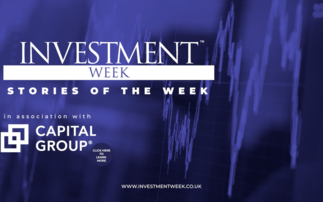High yield: in the eye of the storm
The dual shock of the coronavirus pandemic and oil-price price war meant that global high-yield credit - which is particularly vulnerable to stressed market conditions - sold off at a rapid pace in March. While companies are doing what they can - cutting dividends, buybacks and capital expenditure, and finding ways to optimise their cost structures - it seems likely that defaults will rise over the next year.
Ratings agencies have also been quick to respond, and the pace of downgrades has risen substantially. This means that the number of fallen angels - or issuers downgraded to high-yield status - has soared in recent months.
The silver lining is that credit quality within the global high-yield market is currently much higher than during previous drawdowns. The number of fallen angels, coupled with the fact that more leveraged financing has taken place in the loans market, means that the average credit rating of the high-yield market has improved and now stands at BB-.
Seeking income: high yield or equities?
Unprecedented levels of central-bank stimulus have helped to ease volatility since the March sell-off. However, the asset class is still trading at attractive valuations: convexity concerns are all but banished and yields and spreads also offer the chance to gain attractive levels of income.
Amid this surge of central-bank support, investors have started to think about how to take advantage of attractive valuations as they continue to manage the effects of the crisis. With investors hungry for income, equities and high-yield bonds are natural considerations.
Not only has global high-yield credit delivered better risk-adjusted returns then equities over the past 15 years, it has also recorded lower drawdowns. This is in part because high-yield credit sits above equities within the capital structures of companies, and so takes priority during bankruptcies (and therefore provides a greater degree of protection). But high yield also offers the opportunity to capture the upside. Over the past 15 years, it has delivered almost 60% of the upside of equities with only 40% of the downside.[1]
The income-generating qualities of high yield - or the fact it pays investors coupons - helps explain why it has been able to generate relatively attractive risk-adjusted returns. Figure 1 shows how high yield has regained lost ground more quickly than equities after both the 2001-2 and 2008 market crashes.
Figure 1. High yield has recovered more quickly than equities
Source: ICE Bond Indices, as at March 2020. The US high-yield market currently accounts for more than half of the global market, so is seen as a good proxy measure.
This resilience is partly due to the fact that the coupons of high-yield bonds tend to deliver income much sooner in the cycle than equities do. Companies that issue bonds are legally obliged to pay out coupons in all market conditions, while dividends are dependent on performance and are delivered after all interest has been paid.
This is also shown by the ‘recovery efficiency' of high-yield bonds compared to equities, which is measured by looking at the drawdown period as a proportion of the recovery period. During the drawdowns of the past 30 years, the average recovery efficiency of US high-yield bonds has been higher than for equities.[2]
High equity returns in recent years have been boosted by share buybacks, something that is unlikely to continue in the current environment. And if sectors are subject to state bailouts, they may be forced to suspend dividends. By contrast, central-bank support will help ensure that companies are able to pay coupons on time.
Our approach to investing in high-yield credit
At the international business of Federated Hermes, we are active, high-conviction credit investors and believe that in the current environment, a flexible approach to high-yield credit is more important than ever. Although policy support should reduce the number of defaults, active strategies will be better placed to assess which credits have the potential to withstand the turmoil.
As part of our investment process, we strategically allocate across different regions, ratings, parts of the curve, sectors, instruments and currencies. High-conviction, bottom-up security selection identifies attractive credits, while an emphasis on liquid, quality names lets us reallocate to take advantage of opportunities - such as those which are evident today.
The high-yield universe has globalised rapidly over the last 20 years and we believe that allocating capital to regions other than the US can help optimise a portfolio's risk-return profile. Although the market crash is a global one, countries recover at different speeds and we believe our global outlook should help us diversify in the months ahead.
Our preference for large, multi-layered capital structures also means that our holdings are likely to have more funding options available to them - such as the ability of hybrids to issue public equity - and should also have stronger relationships with banks, which will put them in a better place to withstand any turbulence in the months ahead.
Finally, the coronavirus pandemic has emphasised the need to integrate environmental, social and governance (ESG) factors into credit analysis. Companies do not operate in a vacuum and during this volatile period it is important to find well-run businesses that do not face ESG-related risks. ESG analysis can help protect against the downside and is particularly important during market sell-offs.
Weathering the storm: seeking the upside in global high yield
We believe that the global high-yield market offers considerable opportunities in the months ahead. While defaults will likely tick up, the risk will be mitigated in part by central-bank stimulus and government support. Importantly, the obligation of high-yield credit to pay out coupons means it should recover more quickly and deliver returns earlier on in the macroeconomic cycle. In this turbulent and fast-changing environment, we will continue to take an active, flexible approach to seeking opportunities throughout the global high-yield credit spectrum.
Find out more about Our Global High Yield Strategy, which recently celebrated its 10-year anniversary
The value of investments and income from them may go down as well as up, and you may not get back the original amount invested.
The views and opinions contained herein are those of the author and may not necessarily represent views expressed or reflected in other communications. This does not constitute a solicitation or offer to any person to buy or sell any related securities or financial instruments.
Issued and approved by Hermes Investment Management Limited ("HIML") which is authorised and regulated by the Financial Conduct Authority. Registered address: Sixth Floor, 150 Cheapside, London EC2V 6ET. HIML is a registered investment adviser with the United States Securities and Exchange Commission ("SEC").
Author profile:
Andrey Kuznetsov, CFA, Senior Portfolio Manager
Andrey joined the international business of Federated Hermes in January 2013 and is co-portfolio manager on the range of credit strategies. He joined from C-Quadrat Asset Management, where he managed the multi-strategy credit fund and generated investment ideas for a range of absolute return credit funds. Andrey holds an undergraduate degree in Economics from State University - Higher School of Economics in Moscow, where he majored in Financial Engineering and Mandarin Chinese, and a graduate degree from London Business School. Prior to moving to London he worked in various roles in Russia and China. In 2019, Andrey was named in the Financial News' ‘Top 25 Rising Stars under 40 in European Asset Management' and has been selected to join the leadership team of Next Generation Fixed Income Portfolio Managers network, a CFA UK initiative to bring together the leading portfolio managers in the UK. Andrey is a native Russian speaker and CFA charterholder.
[1] Ibid.
[2] Calculated by comparing the recovery efficiency of the S&P 500 and Barclays US Corporate High Yield Index. Recovery efficiency is the drawdown period divided by the recovery period. Source: Bloomberg, Federated Hermes, as at March 2020. Monthly data from August 1988 until March 2020.












